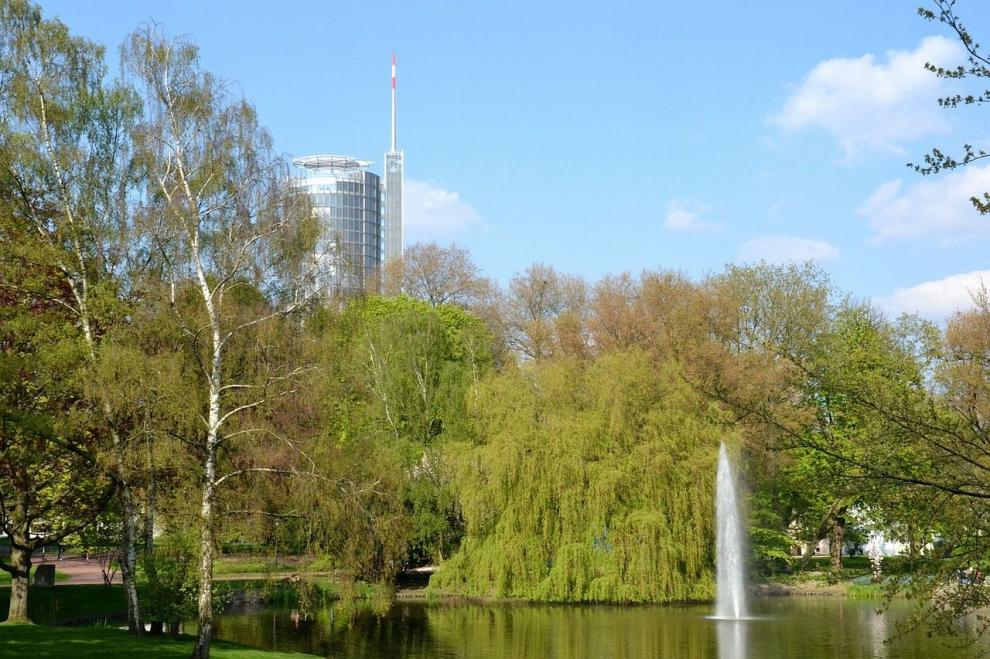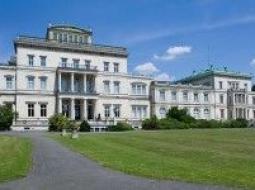Thessaloniki gets ready for its metro launch in November
The underground rapid transit lines have been under construction for almost two decades due to various project delays
 TheMayor.EU logo
TheMayor.EU logo 
Founded around 845, Essen remained a small town within the sphere of influence of an important ecclesiastical principality (Essen Abbey) until the onset of industrialization. The city then, especially through the Krupp family iron works, become one of Germany's most important coal and steel centers. Essen, until the 1970s, attracted workers from all over the country. It was the 5th-largest city in Germany between 1929 and 1988, peaking at over 730,000 inhabitants in 1962.
Following the region-wide decline of heavy industries in the last decades of the 20th century, the city has seen the development of a strong tertiary sector of the economy. The most notable witness of this structural change is the Zollverein Coal Mine Industrial Complex, which has once been the largest of its kind in Europe. Ultimately closed in 1993, both the coking plant and the mine have been inscribed in the list of UNESCO World Heritage Site since 2001.
Notable accomplishments of the city in recent years include the title of European Capital of Culture on behalf of the whole Ruhr area in 2010 and the selection as the European Green Capital for 2017.
Source: Wikipedia
Essen is the central and second largest city of the Ruhr, the largest urban area in Germany. Its population of 583,393 makes it the ninth largest city of Germany, as well as the fourth largest city of the federal state of North Rhine-Westphalia. On the Ruhr and Emscher rivers, Essen geographically is part of the Rhineland and the larger Rhine-Ruhr Metropolitan Region. The Ruhrdeutsch regiolect spoken in the region has strong influences of both Low German (Westphalian) and Low Franconian (East Bergish).
Essen is the modern business, commercial and service metropolis in the heart of the Ruhr Area. Essen is home to the headquarters of some of Germany’s biggest companies such as RWE AG, Evonik Industries AG, E.ON Ruhrgas AG, Karstadt Warenhaus GmbH and Hochtief AG. The Messe Essen is one of the top-ten German trade fair locations. The Coca-Cola Company had originally established their German headquarters in Essen (around 1930), where it remained until 2003, when it was moved to the capital Berlin.

Opened in 1913, the then-New Synagogue served as the central meeting place of Essen's pre-war Jewish community. The building ranks as one of the largest and most impressive testimonies of Jewish culture in pre-war Germany. In post-war Germany, the former house of worship was bought by the city, used as an exhibition hall and later rededicated as a cultural meeting centre and house of Jewish culture.

Built in 1873 by industrial magnate Alfred Krupp, Villa Hügel, the 269-room mansion and the surrounding park served as the Krupp family's representative seat. The city's land register solely lists the property, which at times had a staff of up to 640 people, as a single-family home. At the time of its construction, the villa featured some technical novelties and peculiriaties, such as a central hot air heating system, own water and gas works and electric internal and external telegraph and telephone systems. The mansion's central clock became the reference clock for the whole Krupp enterprise; every clock was to be set with a maximum difference of half a minute. It even acquired its own railway station, Essen Hügel, which is still a regular stop.
The Krupp family had to leave the Gründerzeit mansion in 1945, when it was annexed by the allies. Given back in 1952, Villa Hügel is now seat of the Alfried Krupp von Bohlen und Halbach Foundation and was opened for concerts and sporadic yet high-profile exhibitions.

The Zollverein Coal Mine Industrial Complex is the most famous landmark of Essen. For decades, the coal mine (closed in 1986) and the coking plant (closed in 1993) ranked among the largest of their kinds in Europe. Shaft XII, built in Bauhaus style, with its characteristic winding tower, which over the years has become a symbol for the whole Ruhr area, is considered an architectural and technical masterpiece, earning it a reputation as the "most beautiful coal mine in the world". UNESCO had declaired it a World Heritage Site in 2001 and began to see a period of redevelopment.
Address: Rathaus Porscheplatz 45121, Essen